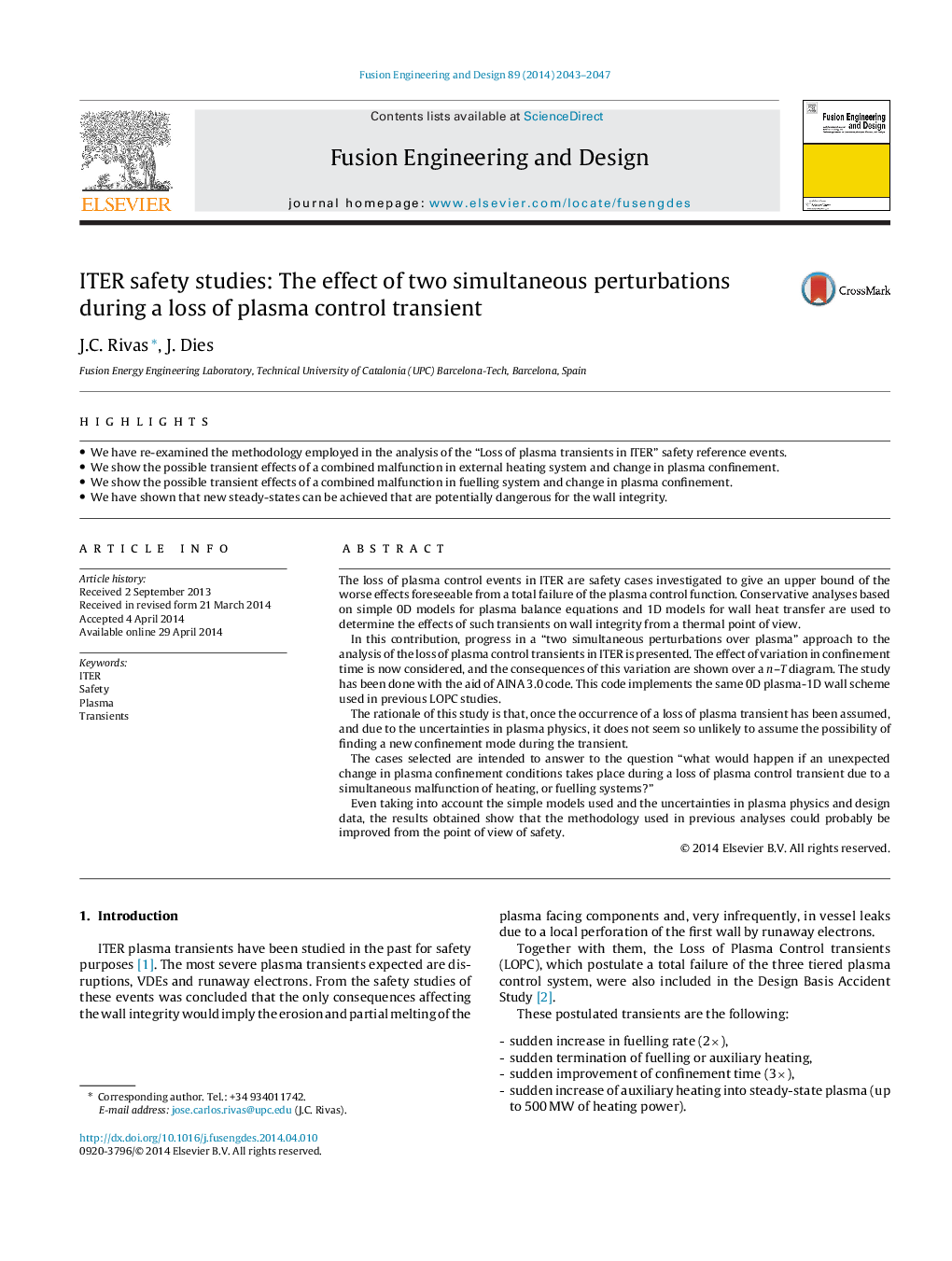| کد مقاله | کد نشریه | سال انتشار | مقاله انگلیسی | نسخه تمام متن |
|---|---|---|---|---|
| 271505 | 504996 | 2014 | 5 صفحه PDF | دانلود رایگان |

• We have re-examined the methodology employed in the analysis of the “Loss of plasma transients in ITER” safety reference events.
• We show the possible transient effects of a combined malfunction in external heating system and change in plasma confinement.
• We show the possible transient effects of a combined malfunction in fuelling system and change in plasma confinement.
• We have shown that new steady-states can be achieved that are potentially dangerous for the wall integrity.
The loss of plasma control events in ITER are safety cases investigated to give an upper bound of the worse effects foreseeable from a total failure of the plasma control function. Conservative analyses based on simple 0D models for plasma balance equations and 1D models for wall heat transfer are used to determine the effects of such transients on wall integrity from a thermal point of view.In this contribution, progress in a “two simultaneous perturbations over plasma” approach to the analysis of the loss of plasma control transients in ITER is presented. The effect of variation in confinement time is now considered, and the consequences of this variation are shown over a n–T diagram. The study has been done with the aid of AINA 3.0 code. This code implements the same 0D plasma-1D wall scheme used in previous LOPC studies.The rationale of this study is that, once the occurrence of a loss of plasma transient has been assumed, and due to the uncertainties in plasma physics, it does not seem so unlikely to assume the possibility of finding a new confinement mode during the transient.The cases selected are intended to answer to the question “what would happen if an unexpected change in plasma confinement conditions takes place during a loss of plasma control transient due to a simultaneous malfunction of heating, or fuelling systems?”Even taking into account the simple models used and the uncertainties in plasma physics and design data, the results obtained show that the methodology used in previous analyses could probably be improved from the point of view of safety.
Journal: Fusion Engineering and Design - Volume 89, Issues 9–10, October 2014, Pages 2043–2047